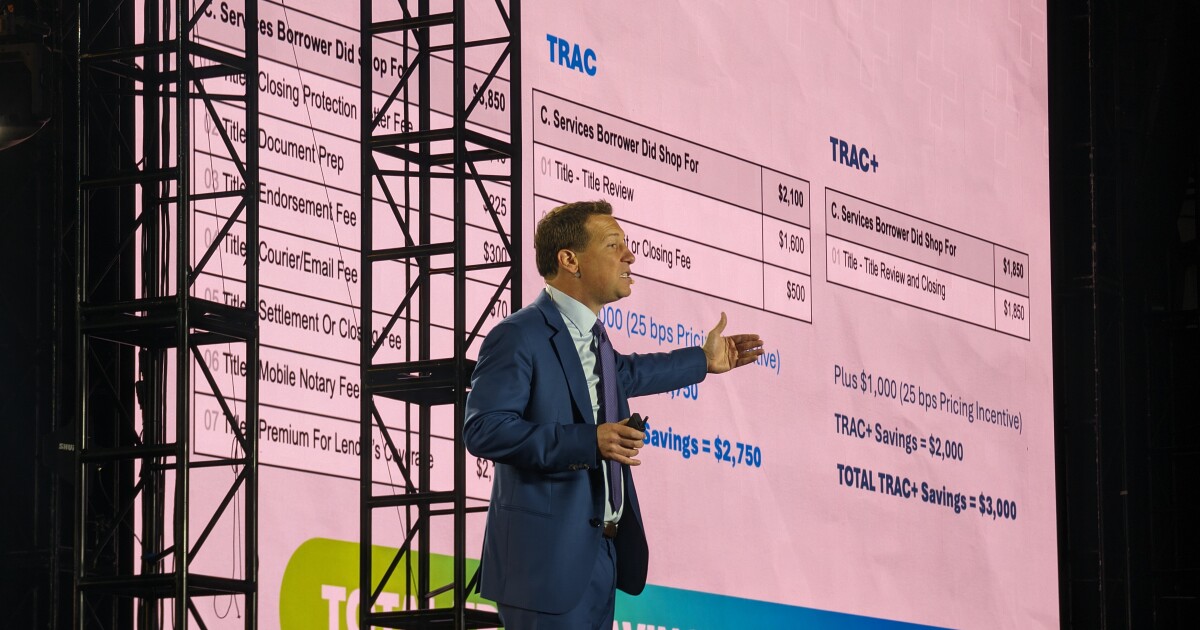
For the home financing industry it's been a tough few years of job cuts, branch closures, buyouts and bellyups. While the bloodletting may not be over, it seems to be slowing. In light of the shift over the past few years, most companies in the space have refocused on their long-term strategy, which includes optimizing technology infrastructure and providing a superior customer experience.
State of the mortgage marketAfter nearly two years of market contraction, mortgage lenders (both independent mortgage banks and depository lenders) are striving for that same leveling off. The good news is, recent data indicates that moment may be on the horizon:
- The National Association of Realtors (NAR), Freddie Mac and the Mortgage Bankers Association (MBA) expect the 30-year fixed-rate mortgage rate to remain elevated but drop slightly in early 2024, with predictions ranging from 6.0% to 6.5%.
- Though not yet back in the black, lenders are losing less per loan than in recent months with an average loss of $534 (18 basis points) per loan in Q2 2023 versus $1,972 per loan the previous quarter.
- The delinquency rate for mortgage loans on one-to-four-unit residential properties has fallen to its lowest level since the MBA's survey began in 1979 and now stands at a seasonally adjusted rate of 3.37%, down 19 basis points from the first quarter of 2023 and down 27 basis points from one year ago.
- The latest forecasts predict growth in mortgage originations by mid-2024. That's later than initially expected, but it'll be here before lenders know it.
Now's the time for actionWith some "breathing room" ahead, mortgage lenders should follow the lead of the broader banking industry by shifting their attention to right-sizing and investing in technology to be more efficient in the upturn. In other words, this is not the time to slow down. In fact, we recommend giving these three areas your full attention now.
1. Use data analytics to boost profitability Lenders need to understand where their business is profitable and where processes need improvement. This will require a comprehensive analysis of information from your data warehouse and core systems like your loan origination system and point-of-sale platform.
Using a business intelligence [BI] platform, thousands of key performance indicators can be derived from this sea of data. For example, lenders can measure the performance of individuals, branches or the entire company using rank reports, leaderboards, scorecards, annual goals and configurable KPIs.
KPI categories can be broken down further by BI. For instance, individual loan originator performance can be assessed by volume, time to close and the accuracy of information entered into core systems. Measurements like this can help lenders understand loan profitability by originator, and the results can be surprising. In some instances, mid-level producers can contribute more to lenders' bottom lines than rock stars.
Performance data can also reveal bottlenecks as loans move through the system by analyzing how long it takes loans to move from application to lock, lock to clear-to-close and fund-to-sold, among other milestones.
Also, past performance data can provide insight into what to expect. For instance, as interest rates start to drop, lenders can monitor how pipeline volume compares to the previous week, month, quarter and year; units and volume originated per month by role; units and volume funded per month by role; and how volumes per loan product shift over time.
These measurements allow mortgage bankers to track productivity and create best practices that help boost profits across the board.
2. Improve workflow for greater efficiency and cost savingsLenders can also use performance data to identify processes ripe for optimization. Are borrowers abandoning a clunky application process? Are loan originators in the field unable to respond to borrower inquiries? Is underwriting bogged down? Are closings difficult to schedule and complete?
For most lenders, the closing table is low-hanging fruit for improving efficiency, reducing costs and mitigating risk exposure. By transitioning from traditional closing to eClosing, lenders can enjoy:
- Faster, more accurate delivery: eClosings can reduce the number of missed deliveries and roll costs, which can be 10 or more basis points. Lenders delivering to the GSE cash windows and hedging their pipeline can deliver collateral in seconds instead of days, for a two-day price as opposed to a ten-day window. For lenders delivering to aggregator conduits through best efforts, the use of eClosings will reduce or eliminate costly extension fees from late delivery of collateral.
- Less staff time and lower overhead: Notably, eClosings eliminate the need for staff and homebuyers to travel and sit through a time-consuming in-person signing. Because eClosings reduce the number of people needed to close loans, there are significant savings to be had in labor costs and overhead. eClosings offer more accuracy, too, ensuring all signatures are present and pages accounted for.
- Reduced post-close margin leakage. Leakage or tightening of the margin happens when costs are incurred because of a slowdown in paper-based processes. This could include extension costs, late delivery costs, and roll costs. In high-volume markets with plenty of margin like we saw in 2021, leakage may have been overlooked. Today though, every basis point counts, and eClosings can help financial institutions of all sizes lower or eliminate leakage.
For all these reasons, mortgage lenders should prioritize the implementation of eClosing. The convenience of eClosings will be a great selling point for your loan originators — those already working for you and those you hope to recruit — and a delightful perk for borrowers.3. Provide a better user experience Technology should not only make your business more efficient, it should improve the user experience, too. For example, loan originators meeting borrowers in the field don't want to wait until they're back in the office to enter those contacts in a database and start connecting. Loan originators want to be responsive any time and from anywhere, with the ability to respond to inquiries, follow up with in-process borrowers and even provide pre-approval letters from their phones.
Real estate agents and other referral partners also want to be kept in the loop. They shouldn't have to pick up the phone or type an email just to check on the current status of a loan. The more transparency and proactive communication lenders can provide, the more referrals they'll receive.
For customers, lenders need to provide a continuous, on-brand experience from application to close. With the average age of a first-time homebuyer at 36, most borrowers expect the home financing process to be straightforward and mobile-friendly. They'll also expect flexibility to start a loan application on one device and complete it later from another, whether that be a phone, laptop or tablet.
Your technology should support communicating with buyers through apps or by text, mediums preferred by thirty-something buyers who want to respond to messages when it's most convenient for them — even if their loan originator doesn't reply until the next morning. Plus, busy, tech-savvy buyers will expect an eClose. After all, they buy groceries, book vacations and do all their banking online — why not apply for a mortgage the same way?
By making processes seamless and intuitive, lenders show loan originators , referral partners and customers they value their time and want to have an ongoing relationship.
Integrated mortgage technology holds the keyMany banks returned to profitability in 2023 as market conditions improved, and we think mortgage lenders will see a brighter future by mid-2024. To make the most of it, mortgage lenders should assess their processes and technologies now so they are prepared to operate more efficiently and provide better service when the market strengthens.



